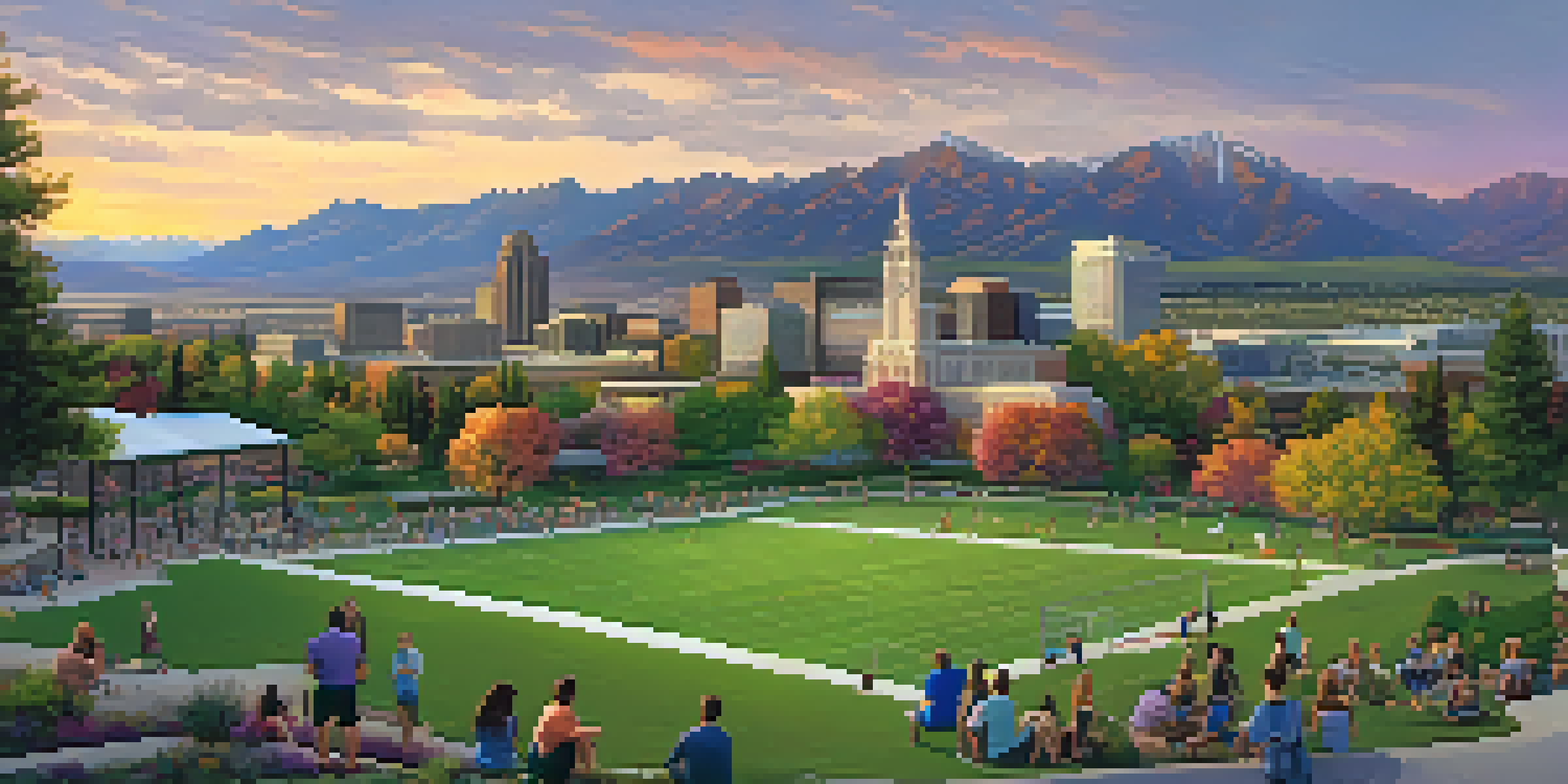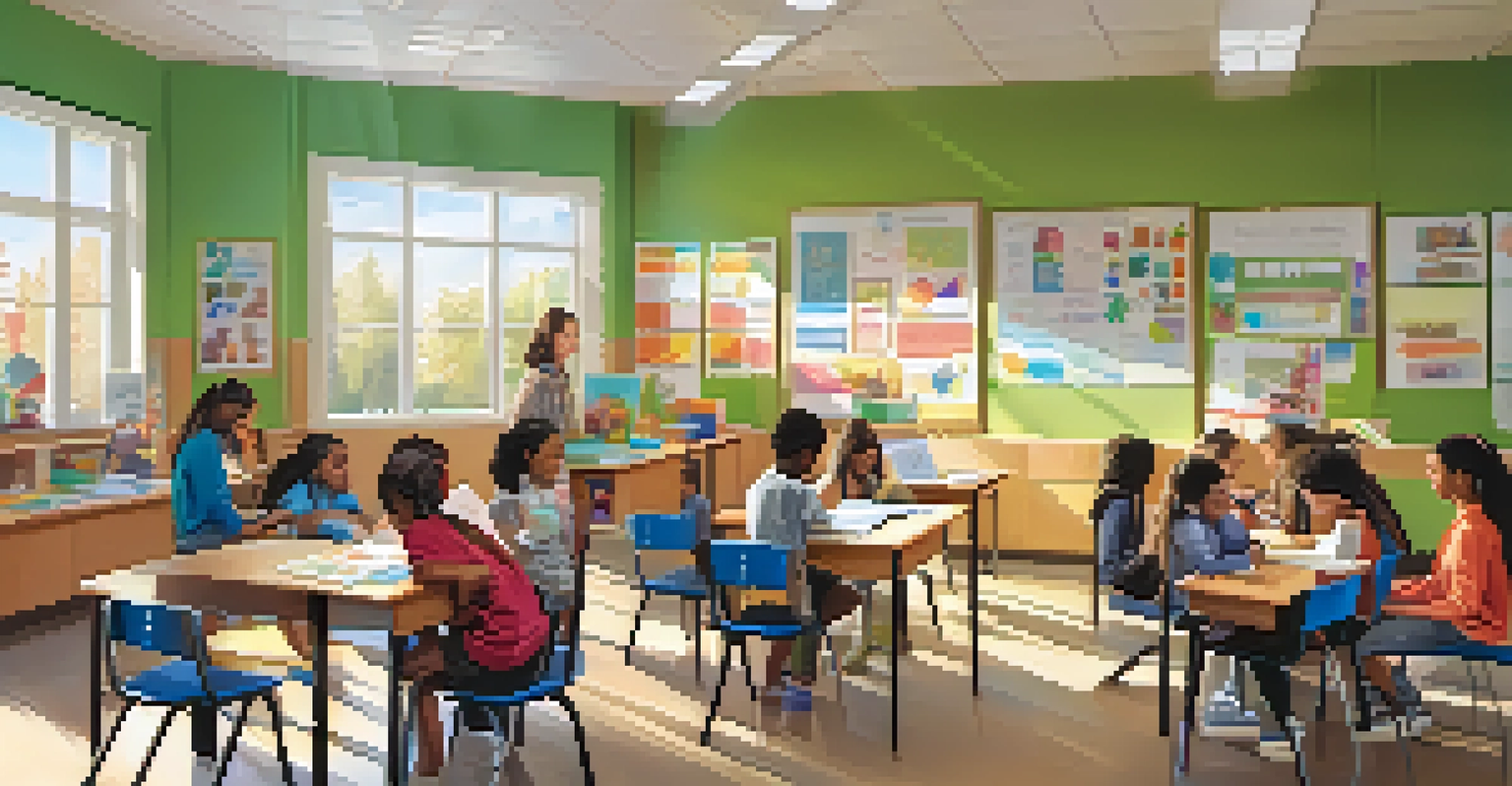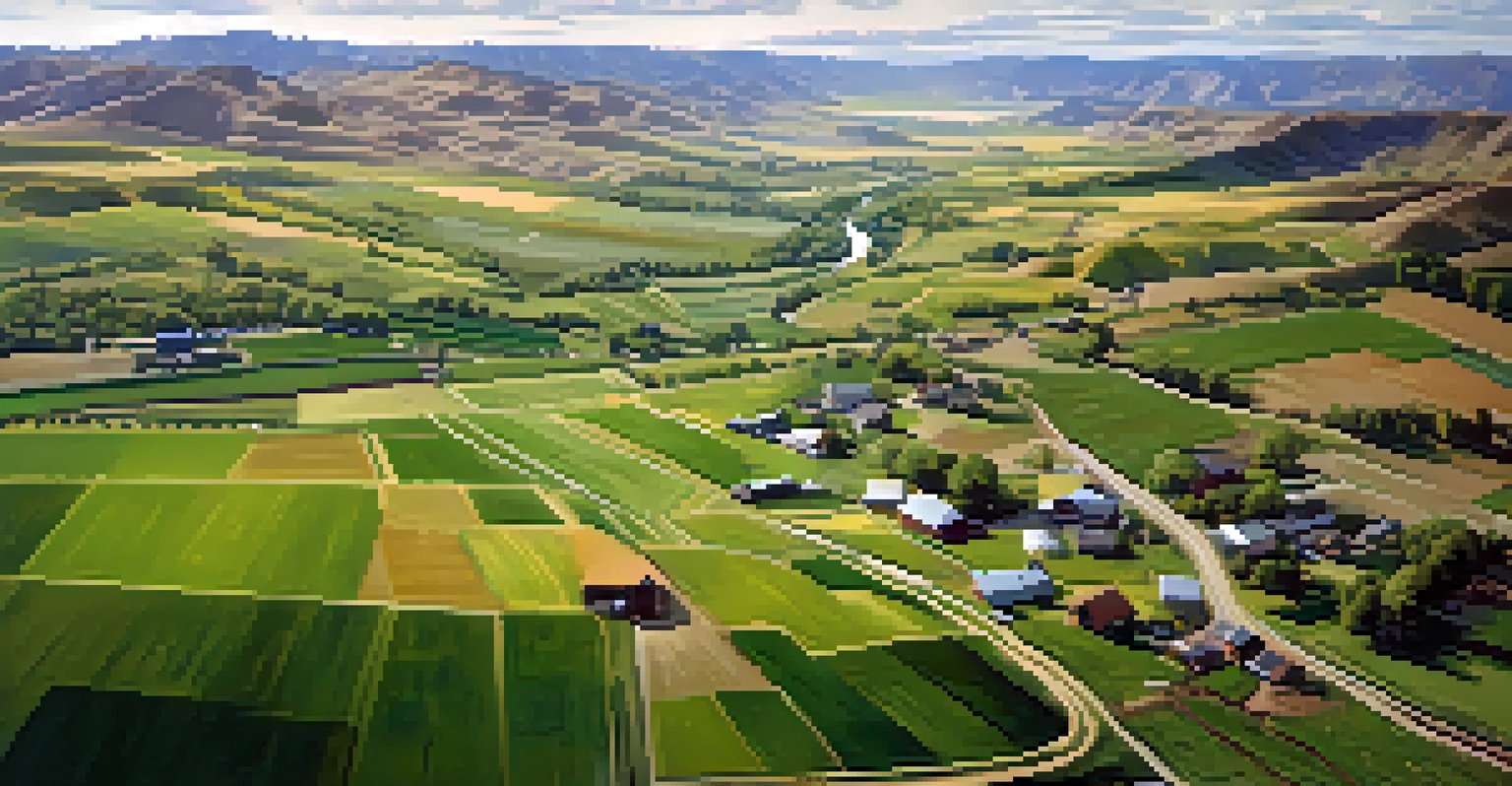Key Political Issues Facing Utah: A Comprehensive Analysis

The Impact of Population Growth on Utah's Resources
Utah has been experiencing rapid population growth, creating both opportunities and challenges. With an influx of residents, the demand for housing, infrastructure, and public services has surged. This growth places a strain on natural resources, including water, which is critical in a state known for its arid climate.
The greatest challenge facing us is not the growth itself, but how we manage it sustainably.
As more people move to Utah, especially to urban areas like Salt Lake City, local governments face the challenge of maintaining quality of life while managing development. Planning for sustainable growth is essential to ensure that the state remains livable and retains its unique character.
Additionally, the demographic changes bring diverse perspectives, which can lead to shifts in political priorities. Addressing the needs of a growing and diverse population will be a key issue for Utah policymakers in the coming years.
Education Reform: Challenges and Opportunities
Education is a hot-button issue in Utah, as stakeholders debate how best to allocate funding and resources. With a growing student population, schools are facing overcrowding and a lack of adequate facilities. This has ignited discussions about the need for increased investment in education.

Moreover, there is a pressing need to address disparities in educational quality across different districts. Some areas, particularly those in rural Utah, struggle with access to quality teachers and technology. Bridging this gap is essential for ensuring that all students receive a fair education.
Utah Faces Resource Challenges
Rapid population growth in Utah is straining housing, infrastructure, and vital natural resources like water.
The recent push for school choice initiatives adds another layer to the debate, as some argue that charter schools and vouchers can provide more options for families. However, opponents worry that this could divert funding away from public schools, further exacerbating existing inequalities.
Healthcare Access: A Growing Concern in Utah
Healthcare access remains a significant political issue in Utah, particularly in rural areas where medical facilities are scarce. Many residents struggle to find affordable healthcare options, leading to calls for reform in how healthcare is delivered and funded. The COVID-19 pandemic highlighted these gaps and increased demand for telehealth services.
In a democracy, the first responsibility of a citizen is to keep his mouth open.
The state has made strides with the expansion of Medicaid, which has improved access for many low-income residents. However, ongoing debates about the adequacy of healthcare services and insurance coverage continue to be a focal point for lawmakers.
Advocates for healthcare reform argue that more needs to be done to ensure that all Utahns, regardless of their income level or location, can access necessary medical services. This issue is likely to remain a priority as policymakers strive to create a healthier Utah.
Environmental Issues: Balancing Development and Conservation
Utah's stunning landscapes are a major draw for residents and tourists alike, but they also face significant environmental challenges. As development pressures mount, the need for effective conservation policies becomes increasingly urgent. Issues such as air quality, water usage, and land preservation are at the forefront of political discussions.
The debate over oil and gas extraction, particularly in sensitive areas like the Uintah Basin, exemplifies the tension between economic development and environmental protection. Many Utahns are advocating for sustainable practices that protect natural resources while allowing for economic growth.
Education Needs Urgent Reform
With a growing student population, Utah requires significant investment to address overcrowding and educational disparities.
Moreover, climate change impacts are becoming more visible, urging the state to take proactive measures. By prioritizing environmental sustainability, Utah can set a precedent for responsible development that respects both its natural beauty and its economic needs.
Transportation Infrastructure: Needs and Innovations
With rapid population growth, Utah's transportation infrastructure is under pressure to keep up. Traffic congestion, particularly along the Wasatch Front, has become a significant concern for residents. Improved public transit options and road expansions are among the solutions being discussed to alleviate these issues.
Innovative transportation projects, like the expansion of light rail systems, aim to provide residents with efficient alternatives to driving. However, funding for these projects is a contentious topic, as lawmakers must balance the needs of urban and rural communities.
Additionally, the push for greener transportation options, such as electric vehicle charging infrastructure, reflects a growing awareness of environmental concerns. As Utah navigates these challenges, finding a comprehensive transportation strategy will be crucial for the state's future.
Social Justice and Equity: Voices for Change
Social justice issues have gained prominence in Utah as various communities advocate for equity and representation. Movements addressing racial, gender, and LGBTQ+ rights are increasingly shaping the political landscape. Activists are pushing for policies that promote inclusivity and protect marginalized groups.
Recent protests and campaigns have raised awareness about systemic inequalities, leading to calls for reform in law enforcement and criminal justice practices. Many Utahns are advocating for policies that prioritize community engagement and accountability.
Economic Diversification Essential
To ensure long-term resilience, Utah is exploring diversification beyond traditional industries, focusing on technology and renewable energy.
The challenge lies in fostering a dialogue among diverse communities while addressing concerns about safety and justice. As these movements continue to evolve, they will undoubtedly influence Utah's political agenda in the years to come.
Economic Diversification: Preparing for the Future
Utah's economy has traditionally relied on industries like tourism and agriculture, but there's a growing recognition of the need for diversification. As global economic trends shift, policymakers are exploring new avenues for growth, including technology and renewable energy sectors. This evolution is essential for ensuring the state's long-term economic resilience.
The tech industry, particularly in the Salt Lake City area, has seen rapid growth and is becoming a significant driver of job creation. However, there are concerns about how this growth affects housing affordability and local communities. Balancing economic expansion with the needs of existing residents is a delicate task.

By investing in education and training programs to prepare the workforce for emerging industries, Utah can position itself as a leader in innovation. This proactive approach will be vital to navigating the changing economic landscape and ensuring prosperity for all Utahns.
Political Polarization: Navigating Divided Opinions
Political polarization has become a defining feature of Utah's political landscape, with increasing divisions among party lines. While Utah has historically leaned conservative, there is a growing progressive movement that is challenging traditional norms. This shift is leading to vibrant debates on various issues, from healthcare to education.
The rise of grassroots movements and local activism showcases the passion of Utahns who want to make their voices heard. However, this polarization can also lead to gridlock in policymaking, making it difficult to find common ground on critical issues.
Navigating this landscape will require leaders who can foster collaboration and dialogue among differing viewpoints. By promoting understanding and compromise, Utah can work towards solutions that reflect the diverse perspectives of its residents.